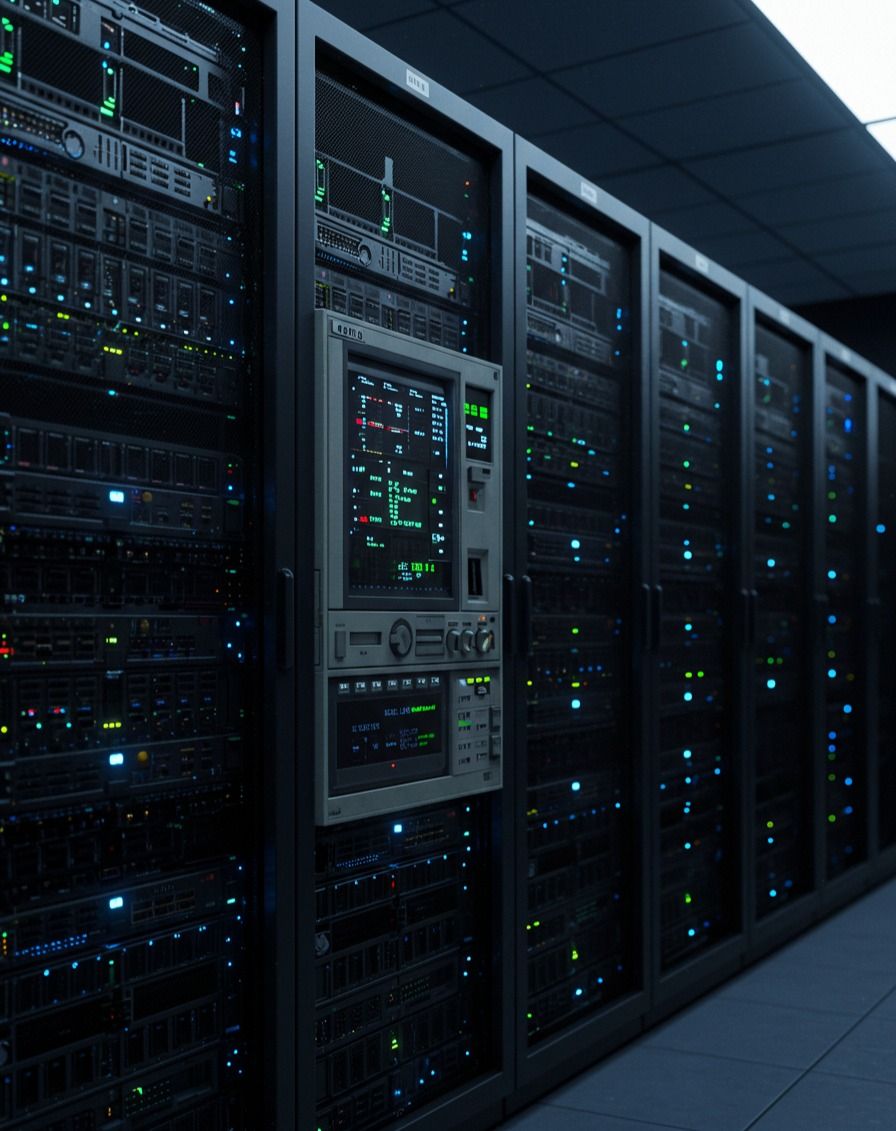What is NAS? Differences Between NAS, SAN & Cloud Storage

Data is one of the most valuable assets for any modern business. Managing, storing, and accessing this data securely is a critical challenge. While many are familiar with cloud storage, other solutions like Network-Attached Storage (NAS) offer powerful, localized control over your digital files.
This guide will explain what is NAS, how it works, and how it compares to other storage solutions like Storage Area Networks (SAN) and cloud storage. Understanding these differences will help you choose the right storage strategy to protect your data and streamline your operations.
What Is a NAS (Network-Attached Storage)?
A Network-Attached Storage (NAS) is a dedicated storage device connected to a network, allowing multiple users and devices to access and share files from a central location. Think of it as a private cloud for your home or office. Instead of plugging a hard drive directly into a single computer, a NAS appliance connects to your network’s router or switch. This makes the stored data accessible to anyone with permission on that network.
A typical NAS device is a self-contained unit with its own operating system, processor, and one or more hard drives. Because it’s designed specifically for storage, its operating system is optimized for file-serving tasks, making it efficient and reliable. Users can access files on a NAS device from their computers, laptops, or mobile devices as if the storage were on their local machine.
How Does NAS Work?
A NAS system centralizes data storage in a simple, accessible way. Here’s a step-by-step breakdown of its operation:
- Connection: The NAS appliance connects directly to your network via an Ethernet cable, usually plugged into a router or switch.
- Configuration: Once connected, the NAS gets an IP address on the local network, just like any other device (e.g., your computer or smartphone). You can then access its web-based configuration interface from a browser to set up user accounts, permissions, and other settings.
- File Storage: Files are stored on the hard drives inside the NAS unit. Most NAS devices support RAID (Redundant Array of Independent Disks) configurations. RAID allows you to combine multiple physical disks into a single logical unit to improve performance, provide data redundancy, or both. For example, a RAID setup can mirror your data across two drives, so if one fails, your data is still safe on the other.
- File Access: Users on the network can access the NAS by mapping it as a network drive or connecting through a file browser. The NAS handles file requests using network protocols like SMB/CIFS (for Windows), NFS (for Linux/Unix), or AFP (for macOS).
This setup makes it easy for teams to collaborate on documents, share media files, and perform centralized NAS backups of their computers.
NAS vs. SAN: What’s the Difference?
While NAS is great for file-level storage, some organizations require block-level storage, which is where a Storage Area Network (SAN) comes in. Although the acronyms are similar, their architecture and use cases are quite different.
- Storage Type: NAS provides file-level storage. This means the operating system on the NAS device manages the file system. When your computer requests a file, the NAS sends the complete file over the network. In contrast, a SAN provides block-level storage. Your computer’s operating system sees the SAN as a local disk and manages the file system itself. It requests data in blocks, which is more efficient for applications like large databases that require high-speed access.
- Network Protocol: NAS uses standard Ethernet protocols (TCP/IP) to send data. SANs typically use a high-speed protocol called Fibre Channel, although iSCSI (which runs over standard Ethernet) is also common. Fibre Channel provides faster and more reliable data transfer, which is crucial for demanding enterprise applications.
- Cost and Complexity: NAS systems are generally less expensive and easier to set up and manage. They are often plug-and-play devices suitable for small to medium-sized businesses (SMBs) and even home users. SANs are more complex and expensive, requiring specialized hardware and expertise to implement and maintain. They are typically found in large enterprise environments.
- Performance: For general file sharing and collaboration, NAS performance is more than adequate. For high-transaction, low-latency applications like database hosting or video editing, a SAN offers superior performance because it handles data at the block level and uses faster network protocols.
| Feature | Network-Attached Storage (NAS) | Storage Area Network (SAN) |
| Storage Level | File-level | Block-level |
| Network Type | Standard Ethernet (TCP/IP) | Fibre Channel or iSCSI |
| Management | Simple, plug-and-play | Complex, requires expertise |
| Cost | Lower | Higher |
| Best For | File sharing, backups, collaboration | Databases, virtualization, high-performance apps |
NAS vs. Cloud Storage: Which Is Better?
Cloud storage services like Google Drive, Dropbox, and Microsoft OneDrive have become incredibly popular. So, how does a local NAS stack up against a cloud-based solution?
- Control and Privacy: With a NAS, you have complete physical control over your data. Your files are stored on your own hardware, on your own network. This can be a major advantage for privacy and security. With cloud storage, you are entrusting your data to a third-party company, which introduces potential privacy risks.
- Cost: NAS involves a one-time hardware cost. After the initial purchase, there are no recurring subscription fees. Cloud storage typically operates on a subscription model, where you pay a monthly or annual fee based on the amount of storage you use. Over the long term, a NAS can be more cost-effective.
- Performance: Accessing files on a local NAS is generally faster than accessing them from the cloud, as your speed is limited only by your local network’s bandwidth, not your internet connection. This is especially noticeable when working with large files.
- Accessibility: Cloud storage excels in accessibility. You can access your files from anywhere with an internet connection. While many modern NAS devices offer remote access features, they can be more complex to set up and may not be as seamless as dedicated cloud services.
- Backup and Redundancy: Cloud providers have robust backup and disaster recovery systems in place. Your data is typically stored redundantly across multiple data centers. A NAS can provide redundancy through RAID, but it’s still a single physical device in one location. To protect against theft, fire, or other local disasters, you would need a separate off-site backup strategy for your NAS backup.
Find Your Perfect Storage Solution
Choosing the right storage solution depends entirely on your specific needs.
- A NAS appliance is an excellent choice for businesses and home users who want a centralized, private, and fast way to share files and perform backups on a local network.
- A SAN is the go-to for large enterprises that need high-performance, block-level storage for demanding applications like databases and virtualization.
- Cloud storage offers unmatched convenience and accessibility, making it ideal for individuals and teams who need to access their files from anywhere.
Many organizations find that a hybrid approach works best, combining the local control of a NAS appliance with the remote accessibility and off-site backup capabilities of the cloud. By understanding the strengths and weaknesses of each option, you can build a storage infrastructure that is secure, efficient, and perfectly tailored to your needs.



